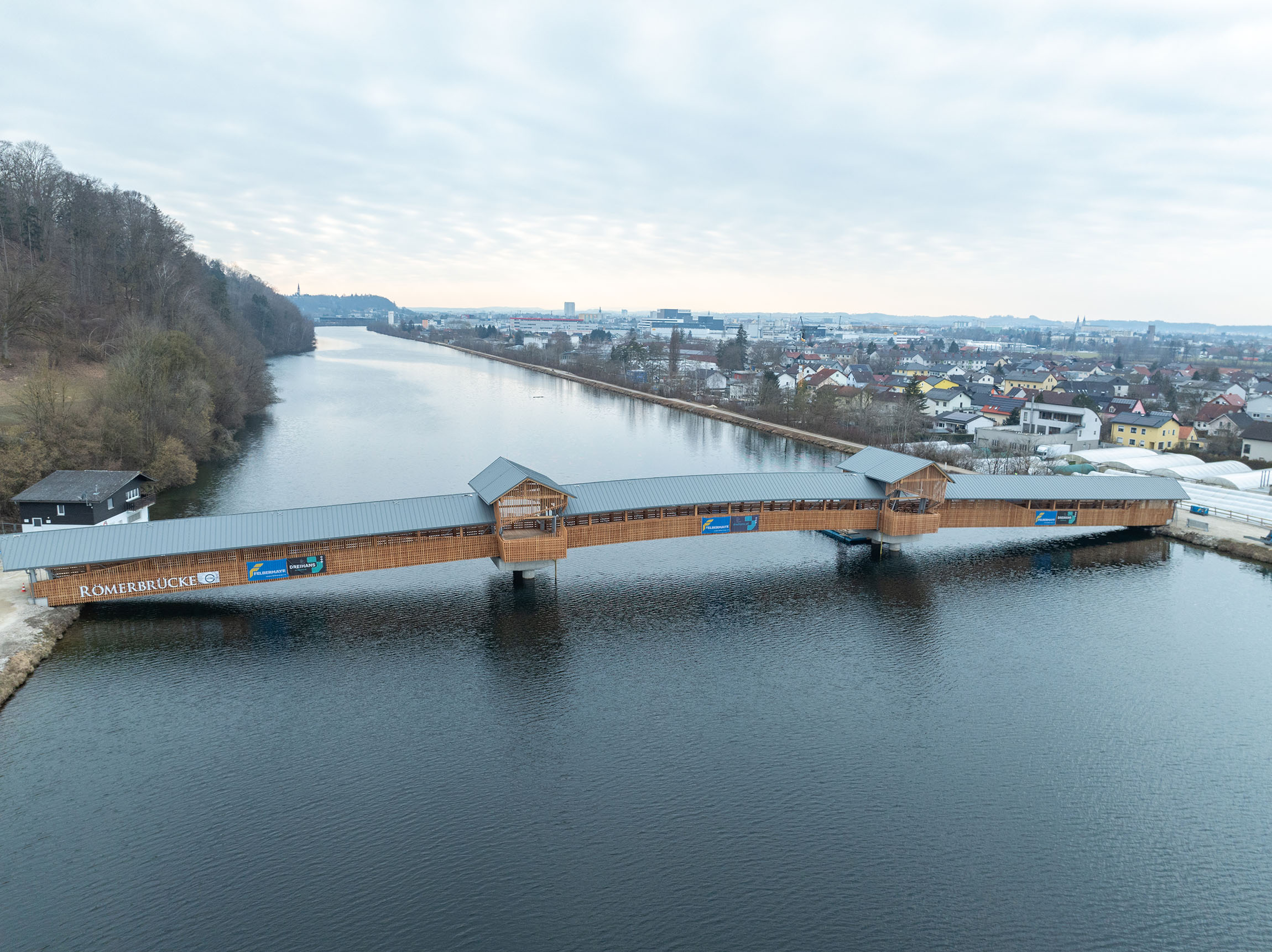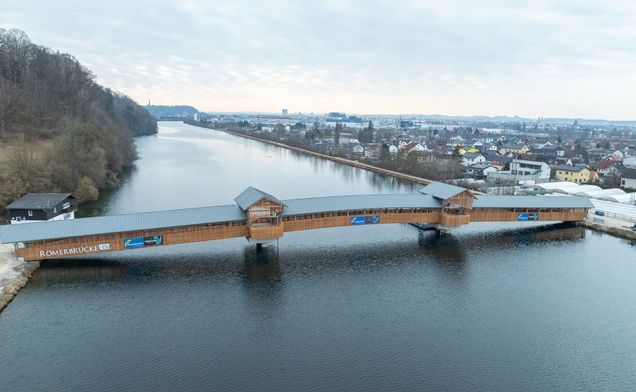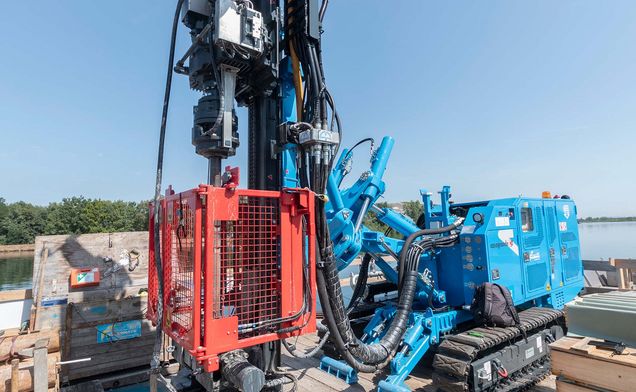Bridging Completed with Native Vegetation
April 30, 2025 | Susanne Winter
Where construction activity dominated just recently, nature is already reclaiming the area: following the opening of the new „Römerbrücke“ bridge in Wels, Danner Landscaping shaped the surrounding spaces. Through tree and shrub plantings, slope stabilization, hydroseeding, and the use of a soil activator, Danner quickly restored the riverside environment of the Traun to its natural state. This allows site-appropriate vegetation to re-establish itself, ensuring that the bridge blends seamlessly into both its structural and natural surroundings. Thus, the project comes full circle – one that had already impressed during the construction phase with its advanced solutions and highest precision.
A look back: The city of Wels was in search of an efficient, economical and, most importantly, a solution that could be realised in a short space of time for the foundation of the pillars of the new „Römerbrücke“ over the Traun. „We were awarded the contract to construct the bridge in a consortium at the end of June last year. It was then necessary to float in the finished bridge before the end of the year,“ explains project manager Thomas Wallenstorfer from Felbermayr Building Industry and adds: „Planning and execution went hand in hand during this extremely short order period.“
Surprise on the riverbed
At what depth can you find load-bearing rock? The specialists from Felbermayr Specialised Civil Engineering in Stams and Salzburg were faced with this question. Twenty metre long drilling cores were first taken from the river bed using a pontoon and drilling device. „These were handed over to the Salzburg Structural Testing and Research Institute to be tested,“ explains Wallenstorfer, describing the process that was necessary for further structural planning. In the process, the subsoil surveying professionals stumbled upon a surprise, because if the Felbermayr team had built a conventional sheet pile box for the foundation of the pillars as planned, it would have been expensive. Instead of the anticipated one metre of bed load, there were five metres in the river bed.
Cost savings through innovation
Felbermayr developed a revolutionary method for anchoring the pillars of the bridge securely in the river bed. Instead of conventional sheet pile boxes, a combination of large bored pile and pile mooring was chosen. Four large bored piles measuring 1.5 metres in diameter and up to 25 metres in length were installed using special drilling equipment. This innovative method proved to be more economical and also resulted in a significant reduction in construction time.
„The targeted use of this innovative foundation technology helped us to achieve significant cost savings in the high five-figure range. We also created an extremely stable and durable solution which perfectly blends in with the local conditions,“ emphasises Wallenstorfer.
Millimetre work with pontoon and SPMT
The bridge elements, consisting of a timber framework construction, were produced by the consortium partner. The six truss girders, each measuring 40 metres in length and weighing 12 tonnes, were transported from Mühlviertel to Wels. These segments were put together on site at a pre-assembly site to construct three bridge spans – each measuring 40 metres long, six metres high and weighing up to 80 tonnes.
The most spectacular part of the project was floating in the bridge spans. The „Self-Propelled Modular Transporters“, abbreviated to SPMT, were used to drive the fully assembled elements onto a specially constructed ramp and load them onto a heavy-duty pontoon. The precision involved in this process was impressive: The pontoon was precision-adjusted by means of targeted ballasting through water inlets and outlets. This meant that the bridge elements could be placed precisely on the abutments on the banks and on the supporting pillars.
„Absolute precision was what was needed here. Even the smallest inaccuracies would have resulted in the elements not being able to be positioned perfectly. Despite this, the process proceeded without a hitch thanks to the excellent partnership and cooperation with the consortium partner,“ concludes Wallenstorfer with a satisfied smile: „Despite this enormous challenge, we have shown that we have a solution for everything.“
Pioneering infrastructure for the region
The completion of the new bridge represents an important contribution on the part of the city of Wels to strengthening the cycling network. Two nationwide cycle trails are now directly connected. This means attractive, safe and environmentally friendly alternatives for commuters and leisure cyclists. Final completion work will follow by spring 2025. This includes constructing two viewing platforms, connecting to existing footpaths and cycle routes and installing LED lighting and railings.







![© DANNER Slide [Translate to Englisch:]](/fileadmin/_processed_/9/b/csm_HP_2025_Bepfalnzung_aufforstung_slider_web_7743c250e1.jpg)
